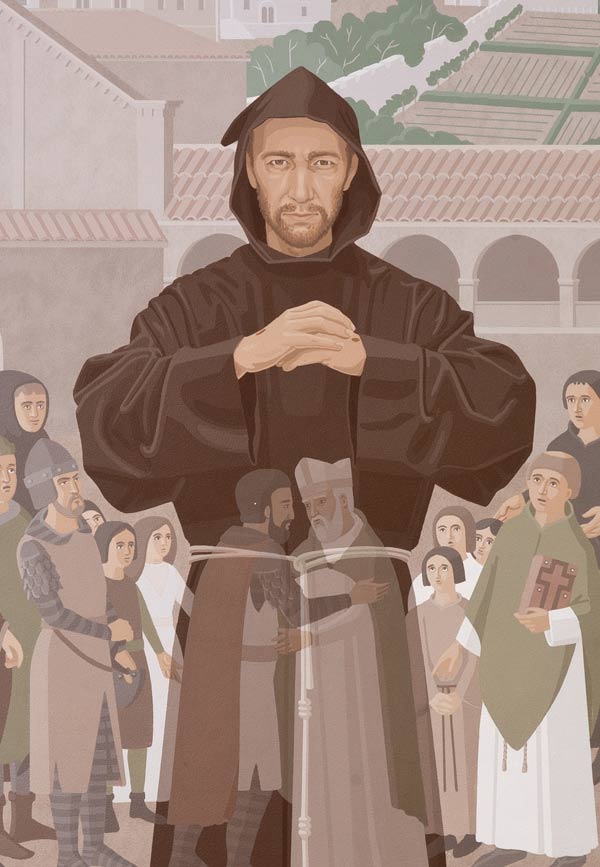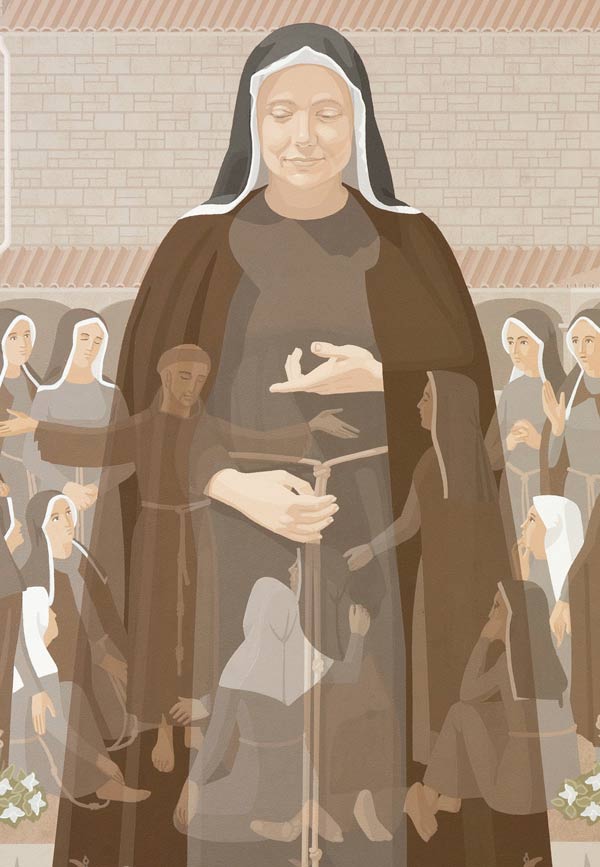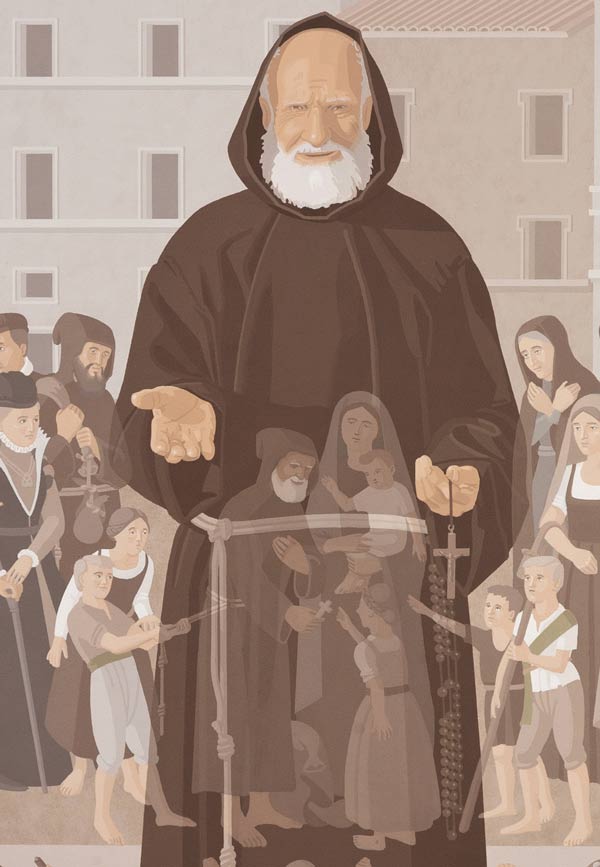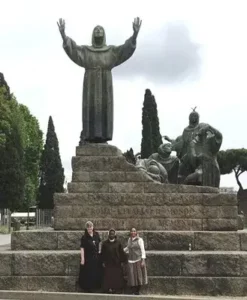Our Foundress, Blessed Mary Angela Truszkowska, was inspired by the lives and spirituality of Saint Francis of Assisi, Saint Clare and Saint Felix of Cantalice. Each of them turned away from worldly comforts, at times even defying the wishes of their families, to follow God’s call to a life of simplicity, prayer and service to all in need. Their ministries were nourished by time spent in prayer, providing the model for the contemplative-active community life of the Felician Sisters.
As a Franciscan community, we follow the Rule of the Brothers and Sisters of the Third Order Regular of Saint Francis. Blessed Mary Angela called on her sisters to live as Saint Francis had lived — in simplicity and humility; in reverence for all God’s creation; as living examples of the Gospel message; and in compassionately caring for and serving the marginalized and those living in poverty.
St. Francis of Assisi
Answering the Call

Francis was born into a wealthy merchant-class family in Assisi, Italy, in 1181 or 1182. He had a privileged childhood and as a young man was known for his reckless behavior and extravagant lifestyle.
After being captured and held as a prisoner of war in a battle between Assisi and Perugia, Francis experienced a spiritual conversion. When he finally returned home, as he prayed before the crucifix in Assisi’s San Damiano Church, Francis heard the voice of God call out to him: “Repair my house.”
Taking this message quite literally, Francis began working to repair the San Damiano Church, which had fallen into disrepair. In time he came to understand that God’s calling for him encompassed much more. He was being called to revitalize the spirituality of God’s people.
Serving the Poor
Francis renounced his life of privilege and embraced a life of poverty, contemplation and service to the poor. He preached the Gospel message and served the poor and the lepers in the valley. He went where no one else would go, bringing the healing message of God’s love to all.
Francis treated the impoverished and the marginalized with compassion and dignity, seeing the face of God in all he met. Likewise, he treated all of God’s creation with reverence and care, seeing in all things the reflection of God’s divine love.
Shortly before his death, Francis received the stigmata, wounds corresponding to those of Jesus at the crucifixion. He died in 1226 and was named to sainthood by Pope Gregory IX two years later.
Francis underwent a spiritual conversion that ultimately never ended. This notion of ongoing conversion forms the core of Franciscan spirituality. Felician Sisters celebrate and embrace their Franciscan heritage and the humble spirituality of Saint Francis of Assisi.
St. Clare of Assisi
Embracing the Call to Faith
The words of Saint Francis, as he preached a Lenten sermon in Assisi, prompted young Clare to leave behind a life of privilege and follow him on a journey in faith.

Clare, the eldest daughter of wealthy nobility in Assisi, Italy, was regarded from her earliest years as prayerful, devout, generous to the poor and increasingly desirous of a deeper relationship with Christ. She was 18 years old when she happened upon Francis, preaching in the Church of San Giorgio in Assisi. His words resonated with her, inspiring her to live a life true to the Gospel, in poverty, simplicity, penance and prayer. Knowing that her decision would not be well-received by her family, she left home to pursue a new life in Christ.
On that night, before Francis and his followers, Clare consecrated herself to God. Committing herself to a life of prayer, penance, and poverty, Clare became the first Franciscan woman.
The Poor Clares
Other women soon joined Clare on her journey, including her mother, sisters and cousin. With the help of Francis, Clare and her followers took up residence in the monastery of San Damiano, where Francis first heard the voice of God calling him “to repair my house.”
Clare lived a contemplative life of prayer and poverty in seclusion at San Damiano for the rest of her life, remaining a faithful follower of Francis. Until his death in 1226, she continued to encourage, aid and care for him.
She was canonized Saint Clare of Assisi by Pope Alexander IV in 1255, two years after her death. Like Saint Clare, the Felician Sisters follow the example of Francis, living simply, as women of the Gospel.
St. Felix of Cantalice
Brother Deo Gratias
Blessed Mary Angela Truszkowska, foundress of the Felician Sisters, looked to Saint Felix of Cantalice as the patron saint of the congregation. Saint Felix led a life of devout prayer coupled with service to God’s people — inspiring the contemplative-active model of religious life that Blessed Mary Angela would help to establish with the congregation’s founding.

Sharing Joy
The son of peasants in Cantalice, Italy, Felix spent his early years as a shepherd and farm hand. He later became a Capuchin friar, seeking donations for the friars’ ministries to the poor and sick. Known for his pious yet joyful presence on the streets of Rome, Brother Felix walked barefoot through the streets with a sack slung over his shoulders. Since he blessed all those he met with a humble “Deo Gratias!” (Thanks be to God!), many referred to him as “Brother Deo Gratias.”
Felix ministered to children on the streets, instructing them through canticles he had composed about the goodness of life. They would come to greet him with smiles and requests for more songs and stories.
Canonized by Pope Clement XI in 1712, Saint Felix was the first Capuchin saint. Felician Sisters, like Saint Felix, are known for their joy.





